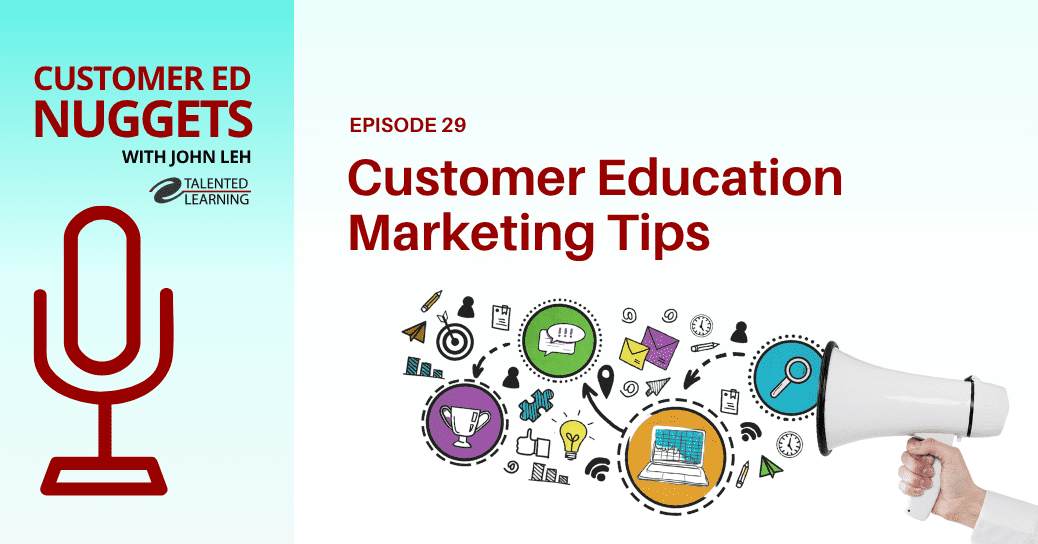
Continuing education is big business. And thanks to a surge in learning technology innovation and greater demand for a workforce with proven professional skills, the business of selling continuing education units (CEUs) is growing bigger each day.
If you offer continuing education programs, should you invest in a modern learning platform to sell, deliver and manage continuing education content? What should you consider before trading up? And if you don’t yet offer CEUs, what should you know before you take the plunge? Let’s look first at what’s happening in today’s continuing education market and then let’s talk about factors you should consider when selecting a CEU-friendly LMS.
Continuing Education 101
Continuing education is training (formal or informal) designed to educate adults in skills or knowledge they need to excel in their vocation. People often seek continuing education to earn or maintain a professional license.
Others pursue this kind of training voluntarily because they’re committed to lifelong learning. Each scenario presents training providers with different opportunities and challenges.
For voluntary lifelong learning enthusiasts, a diverse spectrum of free content is already available online. Therefore, if you want people to pay for your training content, they’ll need to perceive it as worth the cost.
On the other hand, those seeking professional licenses expect to pay for continuing education. In order to practice, doctors, lawyers, architects, nurses, arborists, ministers, teachers, pilots, accountants and other professionals must complete specific continuing education requirements.
Requirements vary by profession and regulatory jurisdiction, but all are expressed in terms of a credit type (such as CEU, CME, CPD, CLE, CPE), which is then tied to time spent completing accredited learning activities from an authorized source.
The basic model awards 1 credit for each 1 hour of content completed, but for some industries, the model is much more complex. Requirements are usually expressed in terms of credit type/time (such as 24 CEUs/year). But here’s an ironic twist. Sometimes the quality of formal CE content is designed to be weak. Why? It can be offered as a low-cost option for buyers who must clear the requirements bar.
Ultimately, professionals are responsible for maintaining their own license or certification. This means they must understand their respective continuing education requirements, complete required training from a qualified CEU source, maintain proof of completion and submit their documentation to appropriate accreditation bodies within the mandated timeframe.
What is Technology’s Role in Continuing Education?
Sources of continuing education content are vast and varied. For-profit training companies, associations, academic institutions, corporations and even entrepreneurial subject-matter experts all create, sell and deliver continuing education content.
Some CEU providers use commercial LMSs to manage their business, with varying levels of success. Many other continuing education providers rely on custom-built solutions to run their training business — an astounding fact, given that more than 70o commercial learning platforms are available today. To understand why this segment of the training technology market is so interested in custom design, let’s take a look at the challenges CE businesses face.
CEUs Meet Employee LMS: Oil Meets Water?
Why do CE content providers have such a hard time finding an appropriate LMS out of the box? Here are six key reasons:
1) Idea Ahead of Its Time
In the past, when traditional training companies started using legacy LMSs to manage their instructor-led business and migrate some content online, those systems were built either for academic or employee-focused learning programs. They were not designed to support CE needs, so CE providers were forced to make ill-fitting systems work or build their own.
2) Conceptual Mismatch
Enticing individuals and organizations to buy and consume training content voluntarily is much tougher than telling employees or students they must complete mandatory training. Workforce-oriented LMS vendors are built and supported by HR and training experts who understand a “compliance” mindset. But commercial CE sellers need an LMS vendor that also understands branding, content marketing, user experience design, social media and community management.
3) Functional Gap
Most employee-oriented LMSs do not offer functionality needed to manage the complexity and diversity of CEUs, organization-level customers or ecommerce-based relationships.
4) Technical Disconnect
It is difficult for employee-oriented LMS providers to understand (let alone integrate with) CE-related technologies such as CPE Monitor, CE Broker, PARS, MOC 2, Avalara, Stripe, OpenBadges, CRM, Zapier, LTI and AMSs.
5) License and Cost Misalignment
Employee “named active user” licensing and cost models don’t align with the rotating, unpredictable learner flow in a commercial LMS. What’s more, for-profit training companies and associations often scale to tens or hundreds of thousands of potential learners, which could quickly become cost prohibitive on a “named active user” basis.
6) Business-Critical Priority
When 100% of your business depends on selling content that generates 8 or 9-figure revenues, and your brand is well known and long established, no off-the-shelf system will do.
In the face of all these obstacles, giving up on a “standard” LMS seems like the best choice for CE providers. But there’s good news. With all the new learning technology vendors flooding the market, some are focusing on CE needs, and they are removing many of these barriers. That means CE sellers with antiquated homegrown solutions or workaround employee LMSs now have viable options that didn’t exist in the recent past.
Should You Move to a CEU-Focused LMS?
If you’re a CE provider who would rather focus on selling training content than building your own LMS, now may be a perfect time to modernize. Has technology caught up with your business model? Would it be worthwhile to switch from a practical and financial perspective? Maybe. Here are four questions to consider carefully before you decide:
1) How Do You Define Your Ecosystem?
It’s crucial for CE providers to document their ecosystem. Every CEU seller has its own target audiences, jargon, credit designations, credit calculation standards, accreditation bodies and processes, association compliance tracking systems and technology integrations. You should also identify specific content development standards and accreditation processes, content due dates, credit reporting windows, and methods of obtaining, tracking and verifying credits as they accumulate. It’s wise to map out all the interrelated parts of your CE selling process and use as the foundation for your LMS requirements and eventual RFP.
2) Are Your Business Processes Automated?
Once you look closely at your CE ecosystem and core requirements, it’s time to analyze your organization’s business processes — from attracting new users and onboarding them to awarding credit. Identify inefficiencies and manual interventions. Once processes are in place, however imperfect, we tend to ignore the need for improvements as time goes on. Often with a fresh analysis, CE sellers discover duplication of data in multiple systems, duplication of systems, and many unnecessary manual tasks such as calling customers, sending email, distributing reports and entering financial data. Any duplication or manual intervention is a cost that may be reduced or eliminated with a new system.
3) Are Your Integrations Automated?
Many roadblocks for CE sellers stem from a lack of technology integration. Sharing data and user profiles or leveraging your existing ecommerce applications can help you resolve some of these issues. Also, leveraging social media (such as LinkedIn) to let users create accounts, share their progress and document their completion status is also part of integration. Fortunately, technology integration is no longer the $15,000-$20,000 investment it used to be. For example, thanks to pre-built, productized APIs, you can easily snap together systems that track all types of learning and business applications. And imagine how many costly errors you can eliminate by entering a learner’s profile data only once in a master record, for use wherever it’s needed across your ecosystem!
4) What Usage Patterns Do You See?
If anything can derail a new CE LMS purchase, it’s the cost. It is critical to know your current and expected usage to accurately solicit pricing proposals and judiciously evaluate the costs and benefits of upgrading. Determine how many active and inactive accounts you support now, and how you expect it to change over time. You’ll also want to know your current/projected logins per month and per year, as well as the volume of courses purchased per month and per year or any other metrics you track. Do you lack critical LMS usage intelligence to guide your business decisions? Now is the time to identify those missing metrics, so you can find a solution that will provide more complete, relevant and actionable information.
Conclusion
As you can see, the world of continuing education is highly specialized. CEU training providers need a learning platform that helps manage all facets of this complex business, and modern LMS providers are beginning to respond with flexible, sophisticated business solutions.
If you want a streamlined system with 100% automation, this may be a good time to look for a CEU-friendly LMS. Once you work through the questions we’ve suggested, you should have a solid basis for discussion with LMS vendors, so you can determine which is the best fit in terms of functionality and cost. At the very least, it may open your eyes to issues and needs you may not have previously considered. Let me know if you need some help figuring it all out.
Thanks for reading!
Need an LMS That Helps You Sell CEUs? Let’s Talk.
Get independent advice from an industry expert. Schedule a free 30-minute consult with me, John Leh, at your convenience…
*NOTE TO SALESPEOPLE: If you want to sell us something, please DO NOT book a consult. You’ll be wasting a free spot others need, so I won’t stay on the call. Instead, contact us through normal channels. Thanks.
Share This Post
Related Posts
Top Customer Education Marketing Tips: Customer Ed Nugget 29
Thoughtful promotion can make a customer learning program shine. But which customer education marketing moves matter most? Find out on this mini-podcast...
2025 LMS Awards: Celebrating the Best Enterprise Learning Systems
Which enterprise learning systems are the best? Find out about the top solutions, as independent learning tech analyst John Leh reveals winners of our 2025 LMS Awards...
4 Crucial Marketing Mistakes to Avoid: Customer Ed Nugget 28
Customer education success depends on strong marketing strategies and tactics. How can you avoid marketing mistakes that undermine your efforts? Find out on this mini-podcast...
Workday Buys Sana: A Second Chance for Enterprise Learning?
Workday just announced plans to acquire Sana Labs. What does this mean for the future of enterprise learning? Our Lead Analyst, John Leh, weighs in...
Selling Enterprise Software? Choose Pilot Programs for the Win
Selling B2B software is a highly complex process. How can both buyers and sellers succeed? Focus on the enterprise buying motion, and pilot programs, in particular. Follow these expert tips...
Compliance Training: Moving From Obligation to Opportunity
How can you transform compliance training from a checkbox exercise to a powerful culture-building engine? Try these proven strategies and tactics...
AI in Training: What Pros and Cons Should You Consider?
AI in training is a powerful double-edged sword. How can you make the most of AI as an asset without being blindsided by liabilities?
LMS Vendors: Enter the Talented Learning Awards 2025
Soon, we'll be celebrating the world's best enterprise learning systems for 2025. So, if you're an LMS vendor, it's time to enter the Talented Learning Awards. See how to participate...
How to Succeed at LMS Data Migration
Implementing a new learning system is challenging. LMS data migration is only one step in the process, but it's crucial. For successful results, follow this expert advice...



















FOLLOW US ON SOCIAL